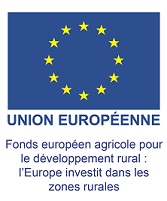The Norman orchard is a real paradise of 3 million trees, especially during the blooming period. The appellations-grown part intended for Calvados production covers about 7,500ha of plantations.
Two cultivation methods are used alongside :
- The high stem apple tree is the historical form of Norman cultivation, an authentic image of Epinal, with cows grazing peacefully une der these tall trees. The high-stem apple tree can give its first apples only about ten years after planting. And it will reach its full production only after 15 years, after which it can give fruit for more than 70 years.
- The low-stem trees are the modern form of orchards dedicated only to fruit production. With this cultivation method, the tree will start producing fruit at around four years old. It will reach its maximum production towards 8 years old but it will live for about thirty years.
According to the local adage, the high-stem pear trees are often described as trees which need « 100 years to grow, 100 years to produce and 100 years to die ».
Cider apples are very different from « cookers » or « eaters », or dessert apples. They are small and have the particularity of being rich in tannins. Cider apples are generally classified in four famillies ("bitter", "bittersweet", "sweet" and "acidulous"). They are mixed together to build up a balanced cider and later a harmonious Calvados. Calvados is never made from just one variety.
The harvest season usually begins mid-September to last until mid-December depending on the maturity of the different varieties.
The fruits are sorted, then crushed or grated, to obtain a pulp. The juice (must) is extracted by pressing.
The fermentation of musts is done in tanks in a natural way. The specifications do not allow any gasification, acidification, sweetening or pasteurization. Fermentation allows the transformation of the sugars contained in the must into alcohol. The ciders are ready for distillation when the sugar has been completely consumed and contain at least 4.5% alcohol at 20° C.
A minimum period of twenty-one days, during which the fermentation took place, is fixed between the extraction of the juice and the distillation for Calvados and Calvados Pays d'Auge and thirty days for Calvados Domfrontais.
Finally, it takes 18kg of cider apples to obtain, after pressing, 13 litres of cider at 5% vol., which will produce by distillation of 1 litre of Calvados at 70% vol.

